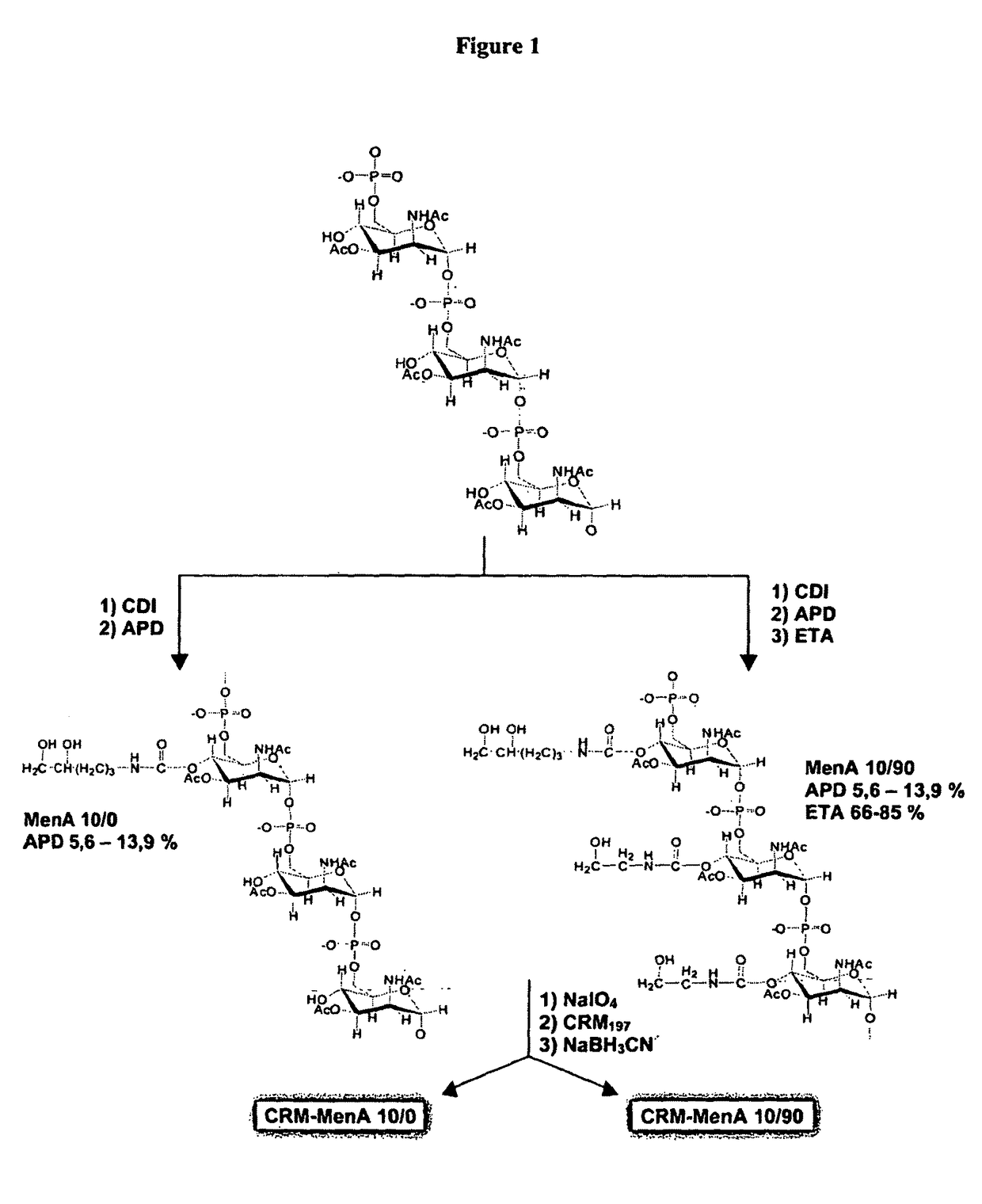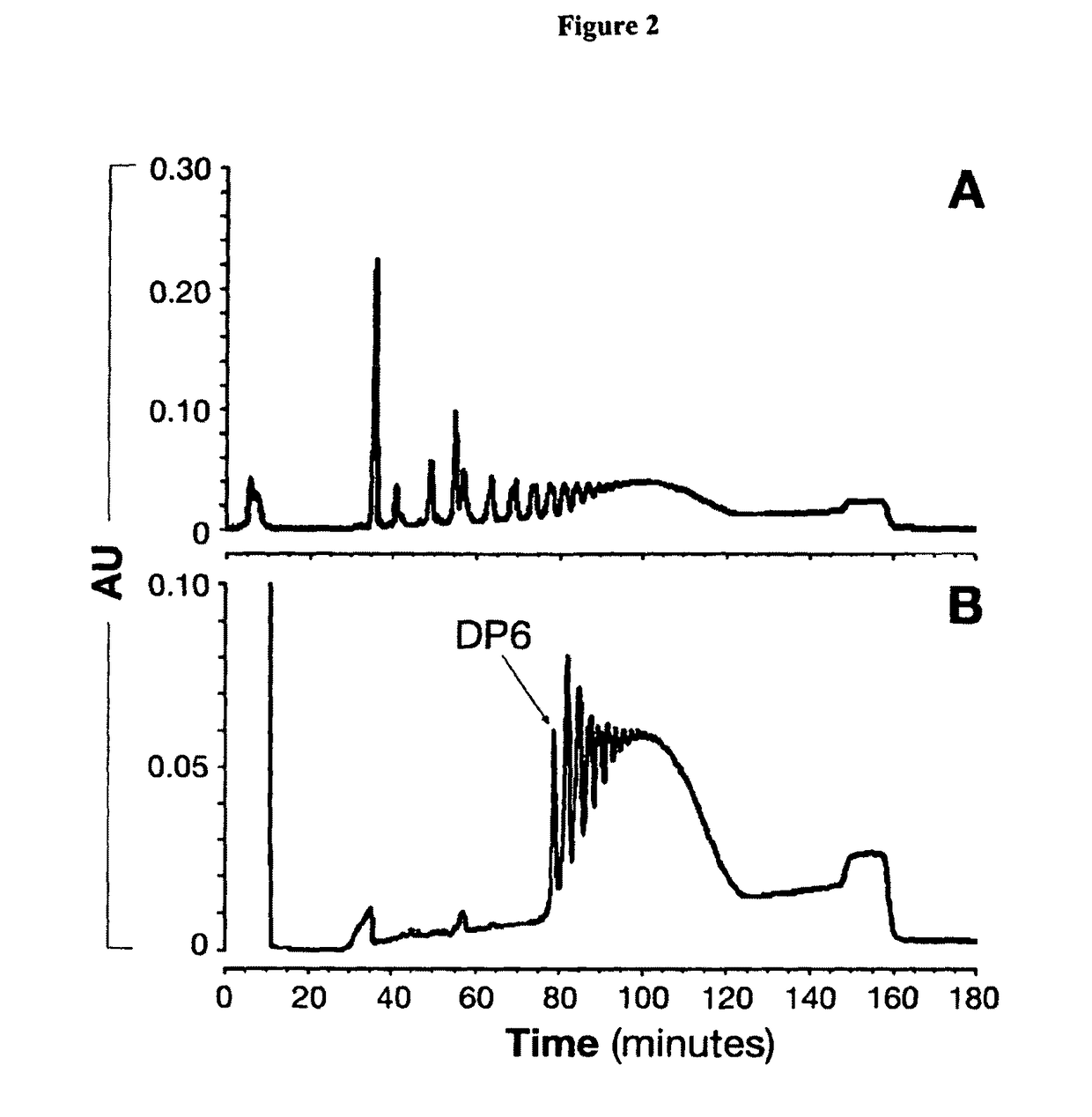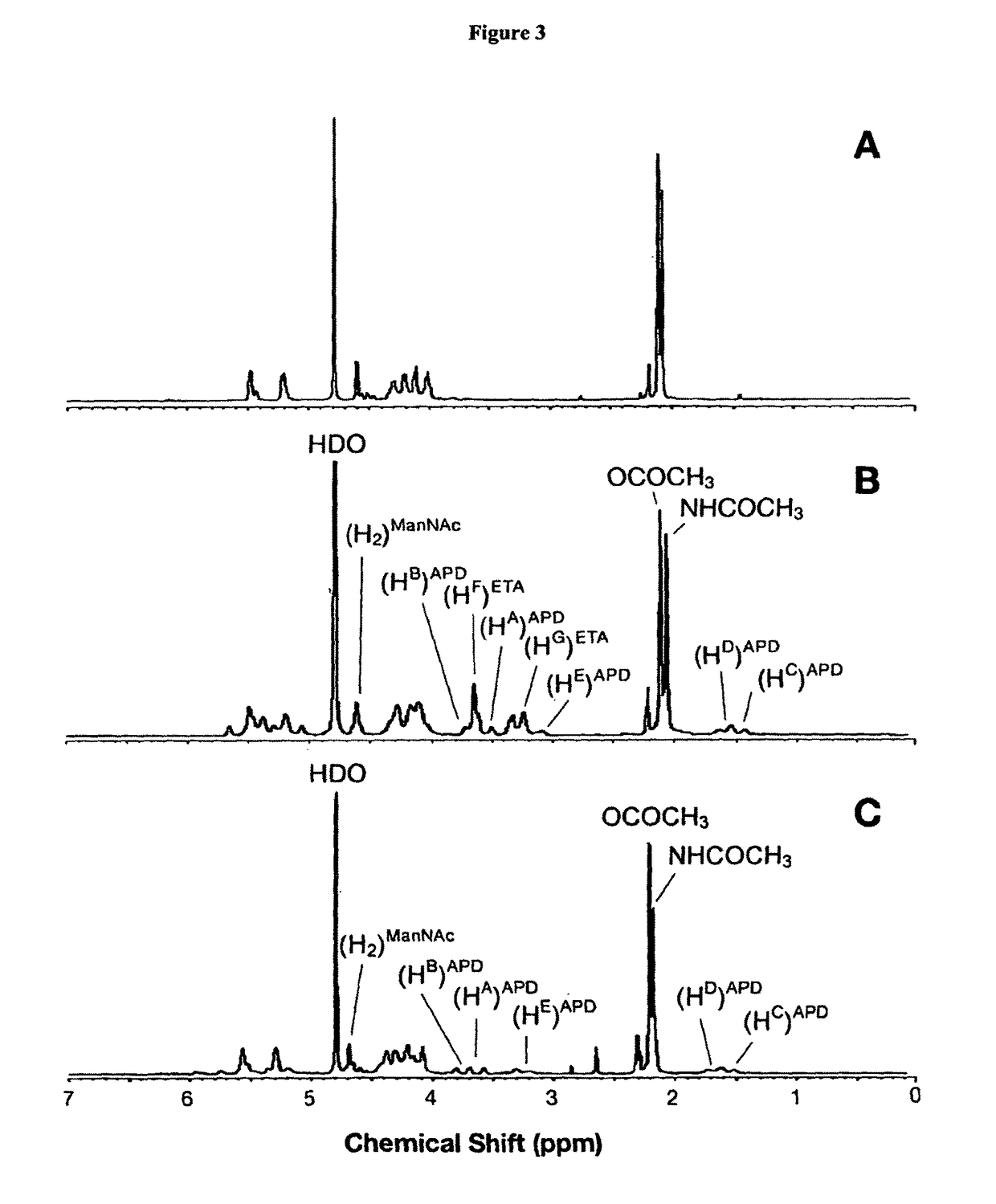Modified saccharides
a technology of saccharides and modified saccharides, which is applied in the field of polysaccharide chemistry, can solve the problems of particular problems in the stability of polysaccharides, and poor stability in water, and achieve the effect of improving stability and stable to hydrolysis
- Summary
- Abstract
- Description
- Claims
- Application Information
AI Technical Summary
Benefits of technology
Problems solved by technology
Method used
Image
Examples
example 1
Modification of Men A Oligosaccharide
Controlled Hydrolysis of MenA Polysaccharide
[0362]MenA oligosaccharides were generated by chemical hydrolysis of a MenA polysaccharide solution. Briefly, MenA polysaccharide was solubilised at a final concentration of 10 mg / ml in 50 mM acetate buffer, pH 4.75. The solution was heated at 73° C. until a degree of polymerization (DP) of approximately 10 was reached. The hydrolysis was controlled by monitoring the variation of the optical activity of the solution (α Hg 365 nm) over time in accordance with the following equation: DP=1 / {0.5817[1−(αt / αm)]}, where αm is the average value of the optical rotatory power of 6 samples when the temperature solution is 50° C., and αt is the optical rotatory power at time t. The hydrolysis was stopped when the α value corresponding to a DP of 10 was reached. At the end of the hydrolysis reaction the solution was cooled at room temperature and the pH corrected to about 6.5.
Size Fractionation of MenA Oligosacchari...
example 2
Modification of Men A Polysaccharide
Chemical Modification of MenA Polysaccharide
[0408]20 mg of native MenA capsular polysaccharide (0.072 mmol) was added to 170 mg (2.5 mmol) of imidazole and 1 mL of CH3CN. Stirring with a magnetic bar, 163 μL (1.59 mmol) of acetic anhydride was added and the reaction was incubated at 55° C. for 21 h. The imidazole:acetic anhydride molar ratio was 2:4. A diafiltration step using a Centricon cellulose membrane (1 kDa molecular weight cut-off) against Milli-Q water (1:7 vol / vol) was used to purify the reaction product. The material was finally dried under vacuum (SpeedVac).
Confirmation of Chemical Modifications by 1H and 13C NMR
[0409]To establish the degree of acetylation, a complete structural characterisation of the modified MenA capsular polysaccharide was carried out by 1H and 13C NMR spectroscopy.
[0410]Quantitative NMR analysis was used to quantify the level of O-acetylation of the saccharide chains. The O-acetylation percentage was estimated by ...
PUM
| Property | Measurement | Unit |
|---|---|---|
| osmolality | aaaaa | aaaaa |
| osmolality | aaaaa | aaaaa |
| osmolality | aaaaa | aaaaa |
Abstract
Description
Claims
Application Information
 Login to View More
Login to View More - R&D
- Intellectual Property
- Life Sciences
- Materials
- Tech Scout
- Unparalleled Data Quality
- Higher Quality Content
- 60% Fewer Hallucinations
Browse by: Latest US Patents, China's latest patents, Technical Efficacy Thesaurus, Application Domain, Technology Topic, Popular Technical Reports.
© 2025 PatSnap. All rights reserved.Legal|Privacy policy|Modern Slavery Act Transparency Statement|Sitemap|About US| Contact US: help@patsnap.com



